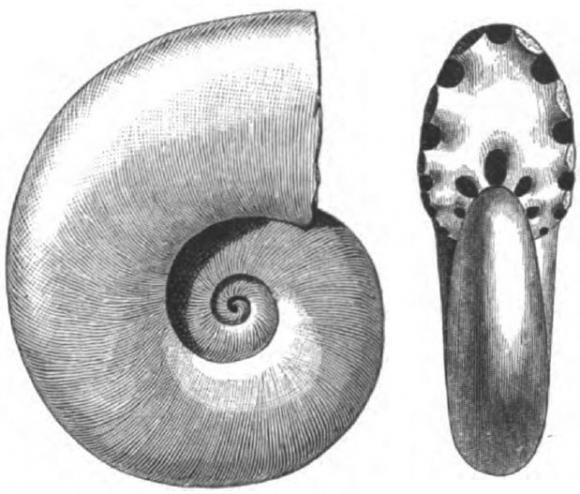PROVIDENCE, R.I. [Brown University] — The world’s oceans are under siege. Conservation biologists regularly note the precipitous decline of key species, such as cod, bluefin tuna, swordfish and sharks. Lose enough of these top-line predators (among other species), and the fear is that the oceanic web of life may collapse.
In a new paper in Geology, researchers at Brown University and the University of Washington used a group of marine creatures similar to today’s nautilus to examine the collapse of marine ecosystems that coincided with two of the greatest mass extinctions in the Earth’s history. They attribute the ecosystems’ collapse to a loss of enough species occupying the same space in the oceans, called “ecological redundancy.”
While the term is not new, the paper marks the first time that a loss of ecological redundancy is directly blamed for a marine ecosystem’s collapse in the fossil record. Just as ominously, the authors write that it took up to 10 million years after the mass extinctions for enough variety of species to repopulate the ocean – restoring ecological redundancy – for the ecosystem to stabilize.
“It’s definitely a cautionary tale because we know it’s happened at least twice before,” said Jessica Whiteside, assistant professor of geological sciences at Brown and the paper’s lead author. “And you have long periods of time before you have reestablishment of ecological redundancy.”
If the theory is true, the implications could not be clearer today. According to the United Nations-sponsored report Global Biodiversity Outlook 2, the population of nearly one-third of marine species that were tracked had declined over the three decades that ended in 2000. The numbers were the same for land-based species. “In effect, we are currently responsible for the sixth major extinction event in the history of the Earth, and the greatest since the dinosaurs disappeared, 65 million years ago,” the 2006 report states.
Whiteside and co-author Peter Ward studied mass extinctions that ended the Permian period 250 million years ago and another that brought the Triassic to a close roughly 200 million years ago. Both periods are generally believed to have ended with global spasms of volcanic activity. The abrupt change in climate stemming from the volcanism, notably a spike in greenhouse gases in the atmosphere, decimated species on land and in the oceans, losing approximately 90 percent of existing marine species in the Permian-Triassic and 72 percent in the Triassic-Jurassic. The widespread loss of marine life and the abrupt change in global climate caused the carbon cycle, a broad indicator of life and death and outside influences in the oceans, to fluctuate wildly. The authors noted these “chaotic carbon episodes” and their effects on biodiversity by studying carbon isotopes spanning these periods.
The researchers further documented species collapse in the oceans by compiling a 50-million-year fossil record of ammonoids, predatory squidlike creatures that lived inside coiled shells, found embedded in rocks throughout western Canada. The pair found that two general types of ammonoids, those that could swim around and pursue prey and those that simply floated throughout the ocean, suffered major losses. The fossil record after the end-Permian and end-Triassic mass extinctions shows a glaring absence of swimming ammonoids, which, because they compete with other active predators including fish, is interpreted as a loss of ecological redundancy.
“It means that during these low-diversity times, there are only one or two (ammonoids) taxa that are performing. It’s a much more simplified food chain,” Whiteside noted.
Only when the swimming ammonoids reappear alongside its floating brethren does the carbon isotope record stabilize and the ocean ecosystem fully recover, the authors report. “That’s when we say ecological redundancy is reestablished,” Whiteside said. “The swimming ammonoids have fulfilled that trophic role.”
The U.S. National Science Foundation and the NASA Astrobiology Institute funded the research.

